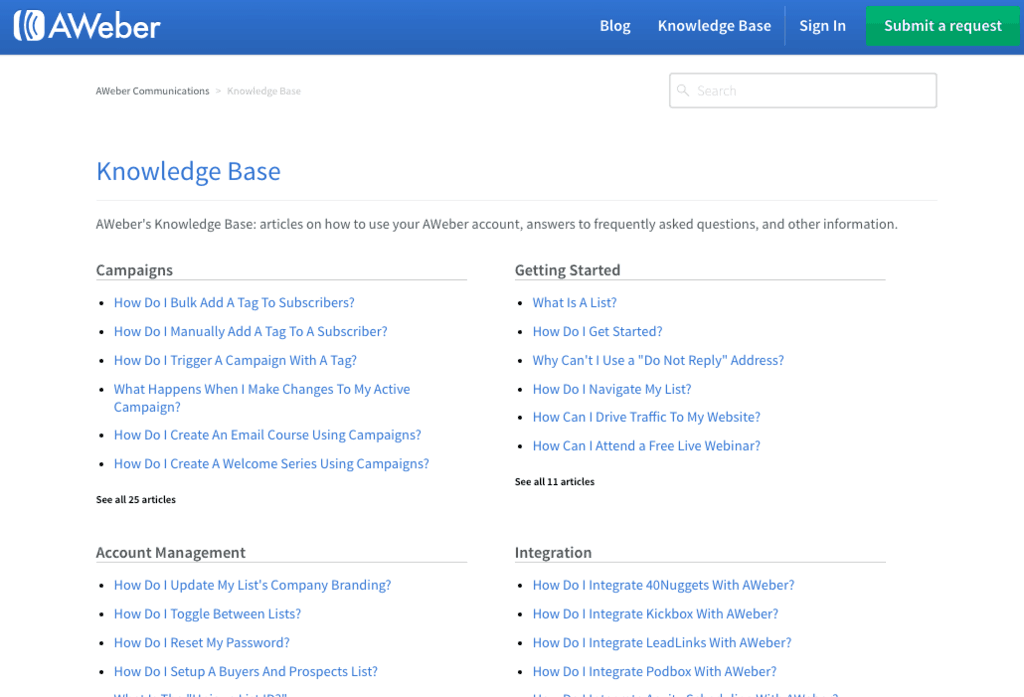“Permission to speak freely?”
When I’m brought into a company to help with their marketing, one of the first things I ask is what their current content marketing strategy looks like.
What I find is usually not pretty – and that’s when the question above tends to happen.
Rarely do I find a marketing problem is a one-off occurrence. It’s usually something that started long before anyone can remember and has stayed that way ever since. Thus, a bad habit is formed.
A bad marketing habit can single-handedly kill your content marketing ROI. That’s why I’ve outlined five bad content marketing habits I often see in B2B companies and, most importantly, how you can fix them.
Bad Habit #1: Non-Existent Formatting
Your target audience doesn’t actually read; they skim. In fact, they do less than that. Nielsen Norman Group found that 79% of test users merely scanned the web pages they came across, while only 16% read every word (and they read even less in emails!).
Want to hide something? Just bury it in a solid paragraph on your website and you can be sure no one will find it.
Here are the sure signs of bad formatting. Is your website or blog guilty of any of these?
- Huge chunks of text (really, anything longer than three sentences)
- No line spacing
- No subheadings
- No bold, italic, or underlined words for emphasis and clarity
- No hyperlinks or source citations
- No images or graphics
Do This Instead: Create a Set of Writer Guidelines for Your Website
Start by creating a set of blog post formatting rules your team can easily follow. It may take a few iterations, but just like your brand, your content formatting should be consistent across your website.
Here are a few example guidelines to get you started:
- Font: Arial, size 11
- Headlines: H1
- Subheadings: H2
- Capitalization: Use AP-style title case for title and subheadings.
- Bold/italic/underline: Use for important terms, emphasized phrases, etc.
Bad Habit #2: Constant Self-Promotion
There’s nothing wrong with promoting your product or service in your content marketing. (That’s what it’s for!) But if you want to avoid looking desperate and making your company look bad, you must give before you take.
What does giving look like in content marketing? Jay Baer summed it up nicely:
“Make your marketing so useful people would pay for it.”

Image Source: jaybaer.com
Do This Instead: Qualify, Then Sell
Don’t be the guy holding a microphone on the street, shouting at anyone within earshot. Qualify your prospects with your content first, and then sell them on the backend.
What does that look like for your blog or website? Try these steps:
- Write an interesting and useful piece of content for your target audience. Perhaps it answers a question, tells a story, or gives advice – all great options! But no matter what, it should be helpful for your readers.
- Offer a content upgrade at the end of your blog post. A content upgrade is a helpful piece of content, like a checklist, Ebook, or tutorial, that is directly related to your article. If the person reading is interested in your article, it should be a natural next step for them to download the content upgrade.
- Once the reader opts in, you can either set the expectation for scheduling a call with them or nurture them in an email sequence until they are ready to buy. You can also periodically send them offers and continue to add value with high-quality content. (I know this is a very simplified explanation, but we’ll get into more details later.)

Bad Habit #3: Shiny Object Syndrome
Our competition is doing it… Why can’t we?!
A small dose of shiny object syndrome isn’t a bad thing. It usually means you have a curiosity for improving your strategies or processes.
Unfortunately, shiny object syndrome is rarely seen in small doses. And the people who have it tend to describe themselves as “innovative” or “trendy.” In other words, they usually don’t admit to their inability to stick with a strategy.
The problem with jumping on this bandwagon is that you never make any real progress. When you decide to try out a new marketing channel or move your team to a new piece of software, and then decide you don’t like it a week later, you’re repeatedly taking one step forward and two steps back.
And while you were distracted, your competition moved ahead with their same boring content strategy that actually works.
Do This Instead: Focus on a Few Strategies & Do Them Well
What are the tactics that move your KPIs? In content marketing, you can boil them down to planning, publishing, engaging, promoting, and converting.
Focus on a few core tactics and do them well. If something new comes along that you think you need, compare it against your current goals and decide if it’ll help you accomplish them. If not, it’s nothing more than a distraction.

Bad Habit #4: No (Real) Publishing Process
Does your publishing process run like a perfectly timed relay or is it a little more… chaotic?
In my 11-Step Method for Writing Powerful Blog Posts, I outline the minimum number of steps you’ll need to create a consistent publishing process. In reality, our processes are much longer when helping create content for a dozen clients at a time.
Nothing will kill a great content idea or half-written post faster than not having a formal publishing process for your team to follow. Without a strong process, you’ll probably find these things happening on a regular basis:
- Mistakes in your published content
- Articles slipping by without approval
- Missed deadlines
- Inconsistent brand voice
- No traffic to your content
- Crickets chirping on social media
Do This Instead: Work With Your Team to Build a Publishing Process
If you are managing multiple people on your content marketing team, here’s the best advice I can give you: choose the system and tools that work best for the team members executing the daily tactics, NOT the ones that best for you.
Here’s what my team and I use for our publishing process workflow:
- Google Docs as a spreadsheet to plan content
- Trello to manage the content workflow throughout the process
- GatherContent to collaborate with clients on content edits
- Leadpages to build landing pages
- Slack to communicate

Each of these tools has a workflow attached to it that everyone agrees on. If someone has an idea for improvement, they can propose it on our weekly Friday team call.
If your publishing process needs some TLC, try this:
- Start by outlining what you’re currently doing with your team.
- Give everyone involved a chance to speak up and punch holes in the process.
- Have everyone contribute solutions and hash it out until you can agree on a process to try.
- Document the new process and check in with your team regularly to see how it’s working.
Bad Habit #5: No Content Marketing Buy-in From Other Departments
According to SiriusDecisions, 60 to 70 percent of B2B content goes unused, and up to 80% of the content generated by the marketing department isn’t used by the sales teams. This is a huge problem!
The goal of your marketing department should ultimately be to create more lead generation opportunities for your sales team. Often, that doesn’t happen for a couple of reasons:
- The marketing team isn’t creating content that the sales team can actually use.
- The sales team doesn’t know about the marketing content they could be using.
- It’s too difficult for the sales team to efficiently find the content due to poor organization.
Do This Instead: Prioritize Sales and Marketing Collaboration
Once you identify the reason your sales and marketing teams aren’t communicating, make improvement a priority. Set regular times for both departments to exchange feedback, suggest content ideas, and share ideas for improvement.
If your marketing team isn’t creating useful content, ask your salespeople to share what types of content they would and wouldn’t use with a prospect. Both departments should understand the situations in which the marketing content can be used and the different stages of the sales funnel where it may be helpful.
Finally, take time to organize your marketing content internally and give your entire team access. Be sure to learn each group’s searching habits; you may need to sort the content several different ways to help them find it.
A great example of a system that is simultaneously helpful for employees and customers is Aweber’s Knowledge Base.

Conclusion
Content marketing can produce great results, but sadly, most marketers never see success.
I’ve given you five common habits that prevent success, along with how to fix them. Now it’s your turn: what rut is your marketing department stuck in? Take some time to honestly evaluate what’s broken in your marketing process and how you can fix it.



